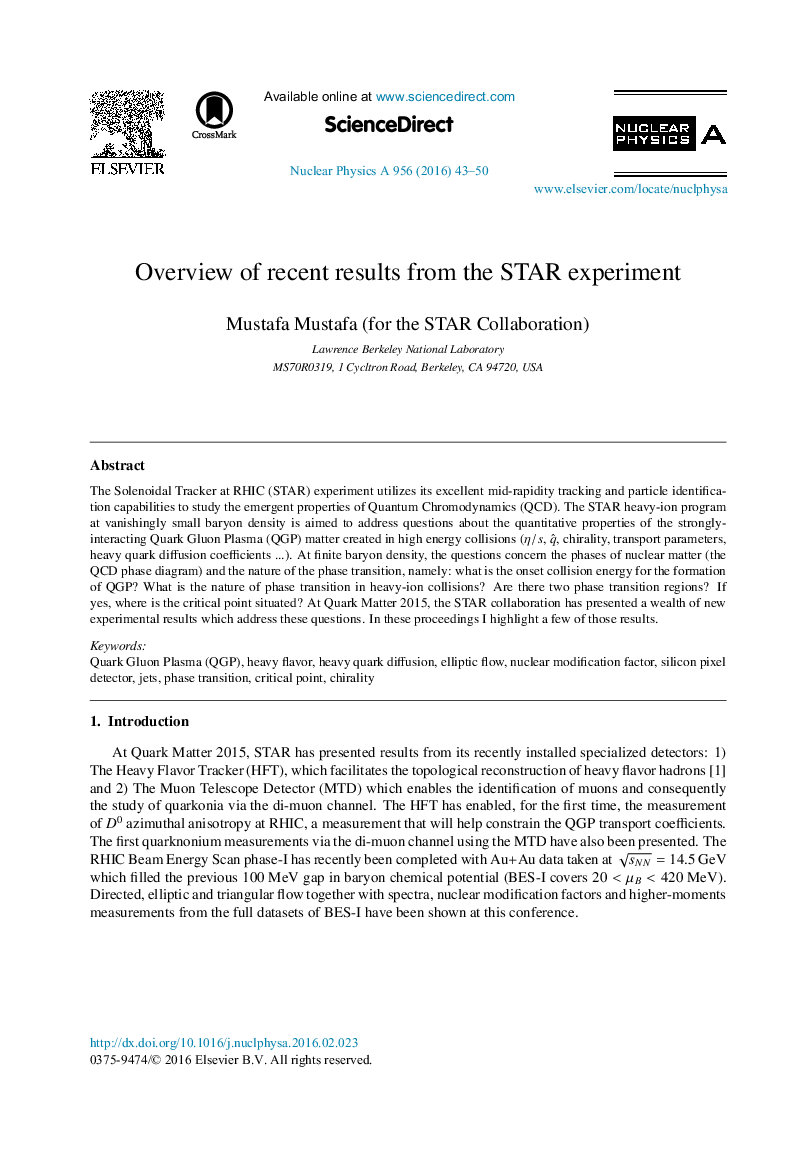| Article ID | Journal | Published Year | Pages | File Type |
|---|---|---|---|---|
| 5494143 | Nuclear Physics A | 2016 | 8 Pages |
Abstract
The Solenoidal Tracker at RHIC (STAR) experiment utilizes its excellent mid-rapidity tracking and particle identification capabilities to study the emergent properties of Quantum Chromodynamics (QCD). The STAR heavy-ion program at vanishingly small baryon density is aimed to address questions about the quantitative properties of the strongly-interacting Quark Gluon Plasma (QGP) matter created in high energy collisions (η/s, qË, chirality, transport parameters, heavy quark diffusion coefficientsâ¦). At finite baryon density, the questions concern the phases of nuclear matter (the QCD phase diagram) and the nature of the phase transition, namely: what is the onset collision energy for the formation of QGP? What is the nature of phase transition in heavy-ion collisions? Are there two phase transition regions? If yes, where is the critical point situated? At Quark Matter 2015, the STAR collaboration has presented a wealth of new experimental results which address these questions. In these proceedings I highlight a few of those results.
Keywords
Related Topics
Physical Sciences and Engineering
Physics and Astronomy
Nuclear and High Energy Physics
Authors
Mustafa Mustafa, STAR Collaboration STAR Collaboration,
